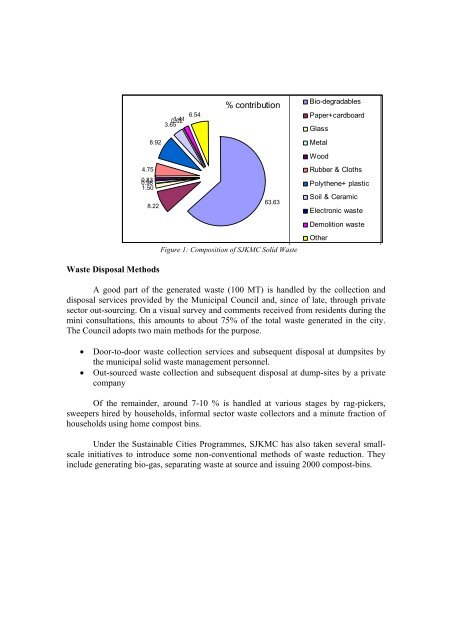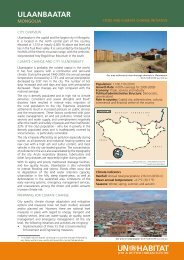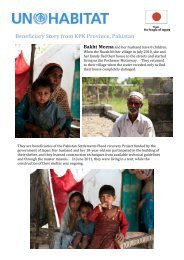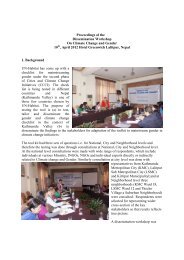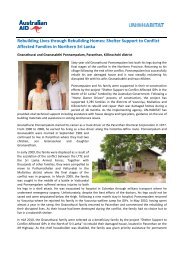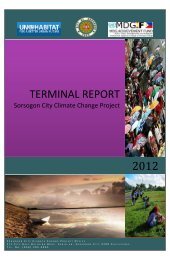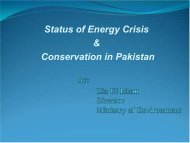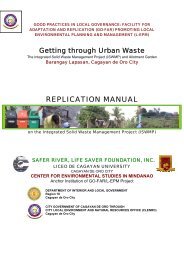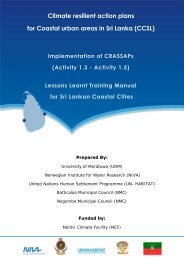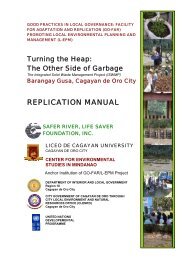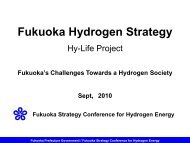Kotte Solid Waste Management Strategy
Kotte Solid Waste Management Strategy
Kotte Solid Waste Management Strategy
Create successful ePaper yourself
Turn your PDF publications into a flip-book with our unique Google optimized e-Paper software.
Bio-degradables% contribution1.41 6.543.65 0.02Paper+cardboardGlass8.92Metal4.750.980.831.508.2263.63Figure 2: Composition of SJKMC <strong>Solid</strong> <strong>Waste</strong>WoodRubber & ClothsPolythene+ plasticSoil & CeramicElectronic wasteDisposal of <strong>Waste</strong>: Current MethodsDemolition wasteOtherFigure 1: Composition of SJKMC <strong>Solid</strong> <strong>Waste</strong><strong>Waste</strong> Disposal MethodsA good part of the generated waste (100 MT) is handled by the collection anddisposal services provided by the Municipal Council and, since of late, through privatesector out-sourcing. On a visual survey and comments received from residents during themini consultations, this amounts to about 75% of the total waste generated in the city.The Council adopts two main methods for the purpose.• Door-to-door waste collection services and subsequent disposal at dumpsites bythe municipal solid waste management personnel.• Out-sourced waste collection and subsequent disposal at dump-sites by a privatecompanyOf the remainder, around 7-10 % is handled at various stages by rag-pickers,sweepers hired by households, informal sector waste collectors and a minute fraction ofhouseholds using home compost bins.Under the Sustainable Cities Programmes, SJKMC has also taken several smallscaleinitiatives to introduce some non-conventional methods of waste reduction. Theyinclude generating bio-gas, separating waste at source and issuing 2000 compost-bins.


